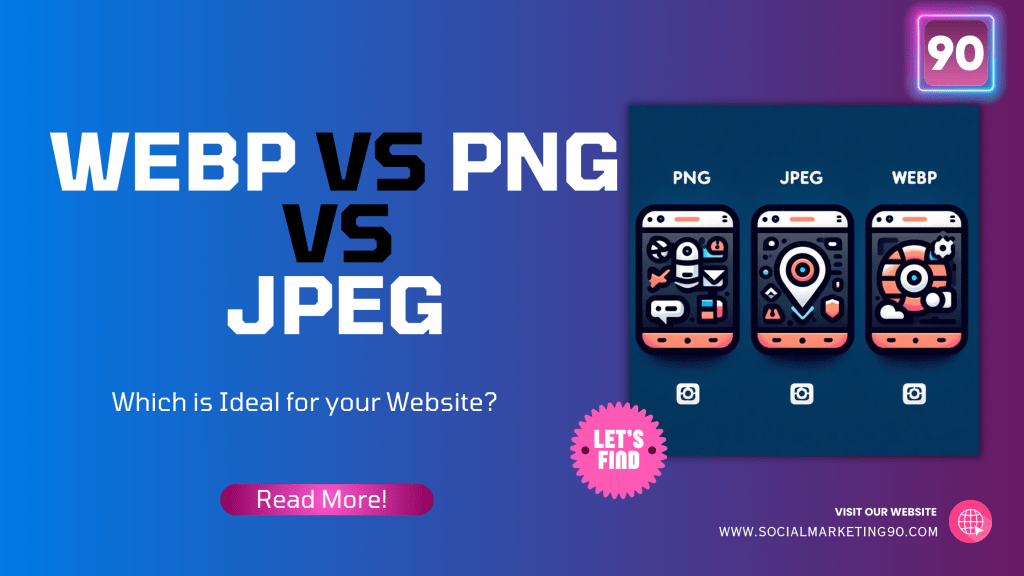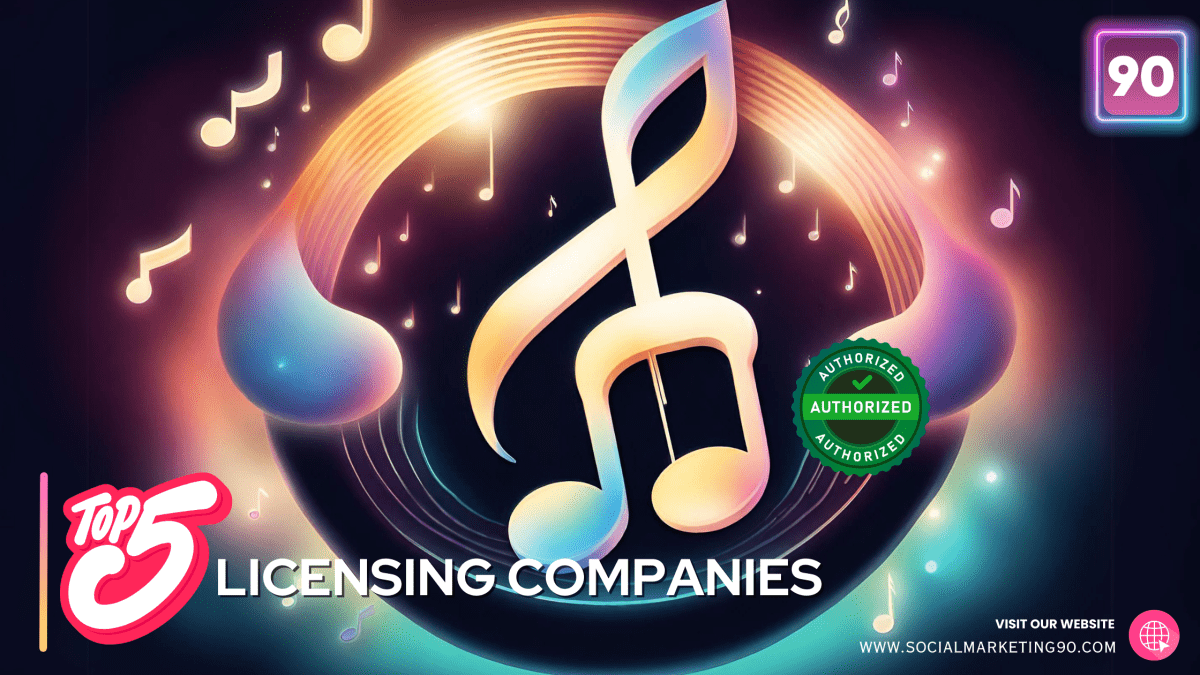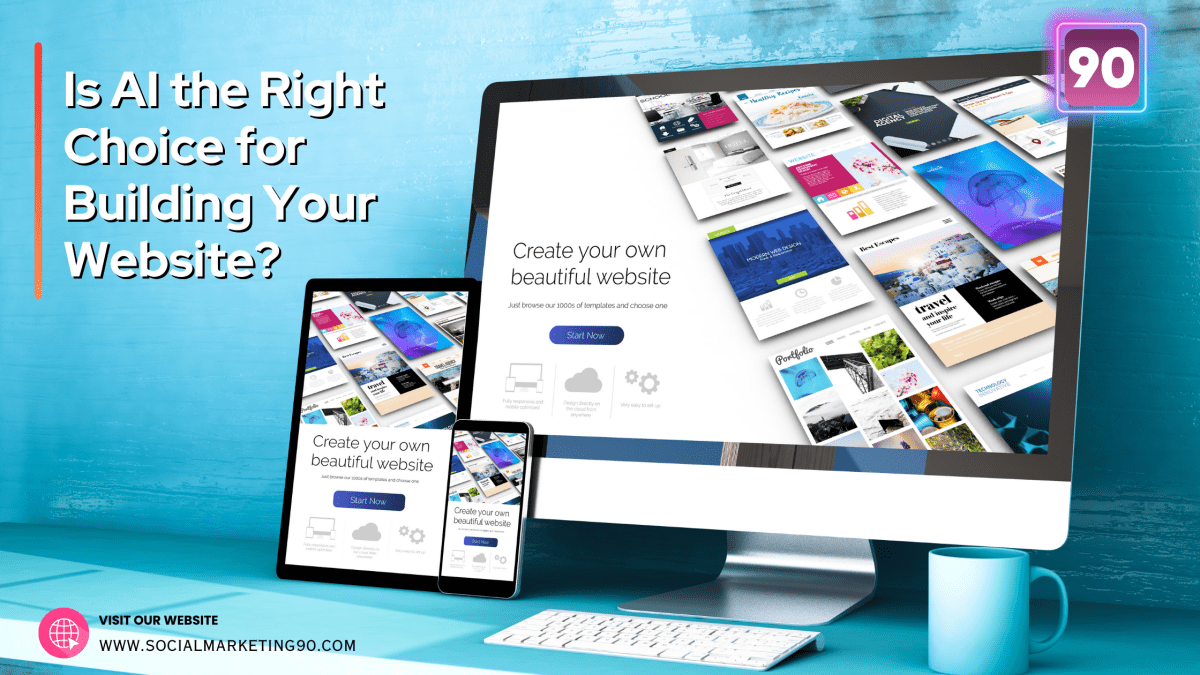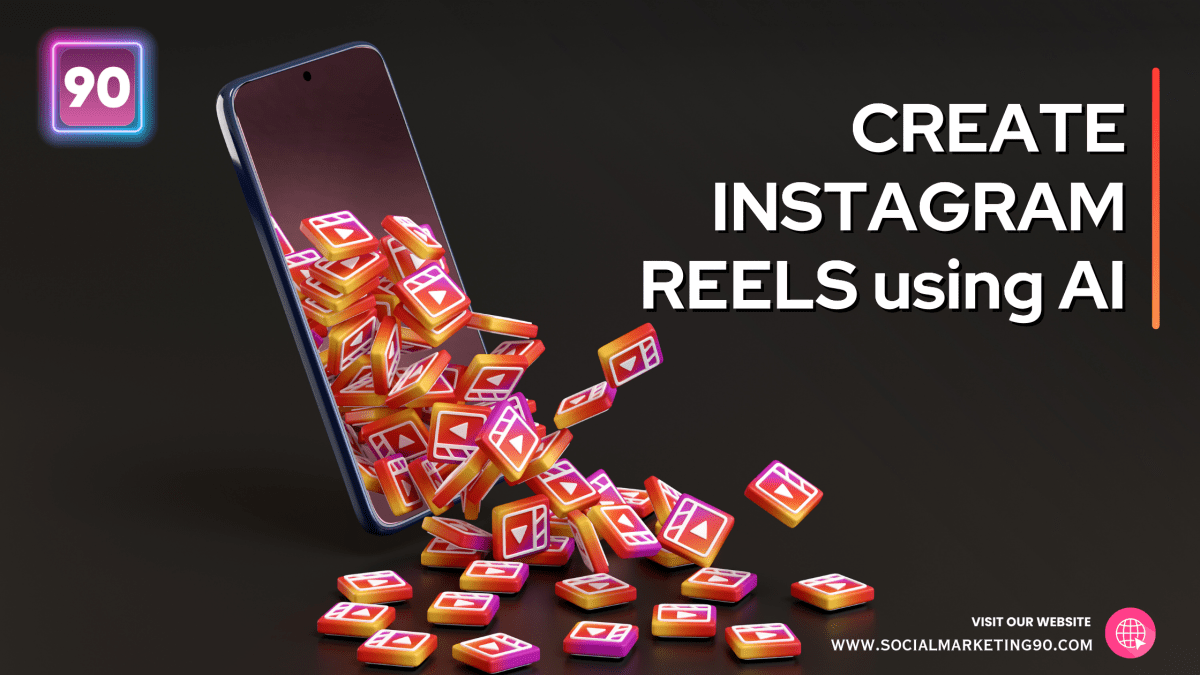Images are one of the best ways to capture the attention of audiences. But if not uploaded in the right manner, it could make your website crawl and force the visitors to hit the exit button. This would be the last thing you want to see, right?
That’s why you need to focus on choosing the most suitable image format during website development. Well, there are mainly three options to consider- WebP, PNG, and JPEG. In this article, you will understand everything you need to know about these image formats to choose the right one for your website.
What is PNG, JPEG, and WebP?
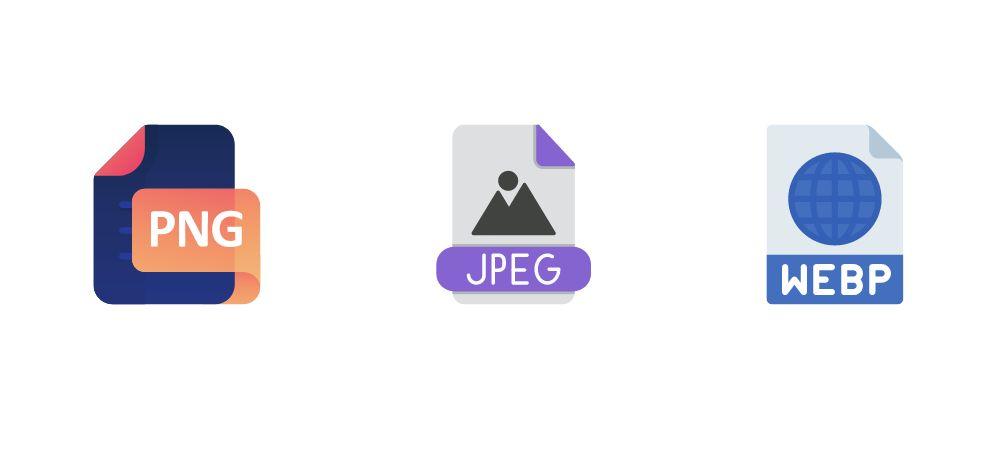
Let’s start with the basics of image formats. PNG stands for Portable Network Graphics. It is a lossless compression file that helps you to retain images without any compromise on the quality. So, it’s idle for images with text and fine-detailed graphics. As per stats, approximately 81% of websites use this image format.
JPG or JPEG is the full form of the Joint Photographic Experts Group. It is mainly used for reducing the size of the image considerably. Unlike PNG, it follows a lossy compression technique that leads to a reduction in image quality.
WebP is a modern image format introduced by Google to reduce the size of high-quality images. It supports both lossy and lossless compression. It is mainly used to optimize the loading speed of websites.
PNG VS JPEG VS WebP: Which one is better?
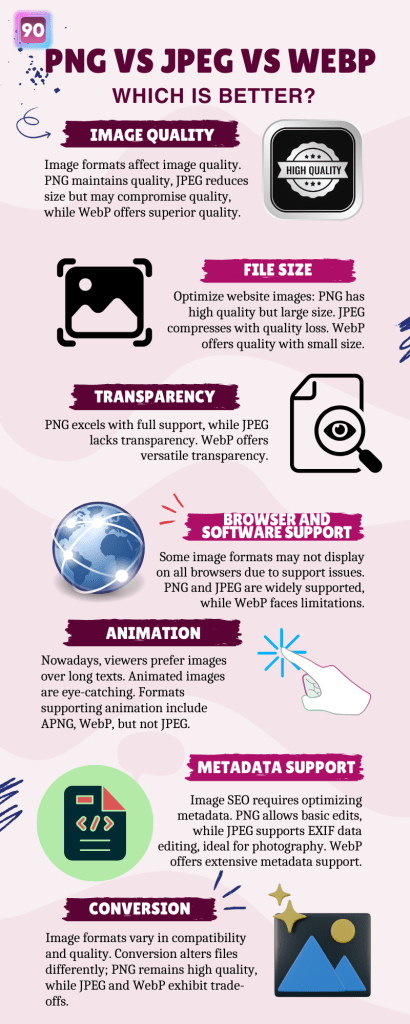
The debate of which file format is the best has been going on for over a decade. So, let’s put an end to that. Check out a detailed comparison of PNG, JPEG, and WebP based on some important factors.
1. Image Quality
Let’s start with the most crucial part- image quality. No one wants to spoil their brand reputation and professionalism with low-quality images. Have a look at how various image formats save you from that:
- PNG: PNG is well-known for its lossless compression. That means you need not worry about image quality in PNG. So, it’s an excellent choice for uploading images where preserving each detail is important.
- JPEG: As said earlier, JPEG follows lossy compression. So, you must not expect the same image quality. Actually, its main purpose is to reduce the image size, making it a perfect choice for photographs and images with gradients.
- WebP: WebP also supports lossless compression just like PNG. Thus, there will not be a significant reduction in image quality. But, the highlighting point over here is that a WebP file can provide superior quality than a PNG file of the same size. So, as far as image quality is concerned, WebP has a clear-cut hand over other competitors.
2. File Size
Think of this. You have done everything to design an eye-catching image to attract your target audience. But, it has just one problem- the image loads slowly due to its large size. Researches show that visitors are more likely to leave a website if it takes more than 400 milliseconds to load completely. Well, here’s how various image formats can save you from that situation:
- PNG: PNG’s high image quality comes at a cost. Usually, it has a larger image size as compared to other formats. Therefore, PNG images are not so fit for websites and landing pages where metrics like loading time are quite crucial.
- JPEG: JPEG’s lossy compression attains a lower file size as compared to PNG. Users can opt for high compression to keep the file size at a minimum. However, image quality may deteriorate considerably in such a scenario.
- WebP: The best part about WebP is that it delivers the highest image quality at the lowest file size as compared to both PNG and JPEG. Its efficient lossy and lossless compression techniques help you to cut down file size largely without compromising on quality.
3. Transparency
Transparency support for images refers to the ability of an image format to display areas of the image as transparent, allowing the background to show through. It is due to transparency that certain images with irregular shapes blend naturally to different backgrounds to improve user experience. Check out how the choice of image format influences that decision.
- PNG: PNG image format has a special reputation for full support for transparency. Its alpha channel enables control over transparency levels. So, PNG is a good choice for images with complex transparency requirements, such as logos, icons, etc.
- JPEG: JPEG does not support transparency as it does not have alpha channel information. This file format works only for images with solid backgrounds, which is one of the biggest drawbacks of choosing it.
- WebP: Like PNG, WebP also supports transparency both in lossy and lossless compression methods. Therefore, WebP is considered a more versatile choice for various types of images and usages.
4. Browser and Software Support
What if your image doesn’t appear to certain viewers even after all this hard work? Unfortunately, not all browsers support every file format. And editing some file formats is even harder than the others. Have a look at the browser and software support of each image format.
- PNG: PNG is one of the most traditional image formats and is supported by almost all browsers. You can edit it simply through any software. Therefore, by using PNG, you can ensure that everyone views your image irrespective of the browser.
- JPEG: Just like PNG, JPEG enjoys widespread support from all browsers and editing software. Both PNG and JPEG are regarded as the standard format for sharing images.
- WebP: Perhaps one of the biggest reasons why many hesitate to switch to WebP is the lack of browser and software support. Since WebP is comparatively a new image format, the support system for it is expanding as of now. Even though almost all prominent browsers support it, still some like KaiOS do not support it. Creating and editing WebP files is also a headache as you cannot open them directly from most editing software. As a result, you may need to implement fallback strategies for those who cannot view the image.
5. Animation
Gone are the days when people sat back and read thousand-word content in a stretch. Nowadays, viewers are more attracted to images. Animated images are a good idea to catch their eyes. However, not all image formats support animation. Check out the image formats that support animation.
- PNG: Even though PNG was not originally designed for animations, there is a variant called APNG (Animated Portable Network Graphics). It supports animated images. But this format is not yet as popular as GIF or WebP.
- JPEG: JPEG does not support animation as it does not have the ability to store multiple frames. It is meant for still images.
- WebP: WebP is a better choice for sharing animations. You can create animated images with lossy or lossless compression. It even stands as a top alternative to GIFs, both in terms of lower size and image quality.
6. Metadata Support
Uploading a catchy image is not just enough in this era of cut-throat competition. You need to optimize the metadata to make sure that it reaches the right audience. However, it’s not the same for all image formats. Here is how the choice of image format affects your image SEO efforts.
- PNG: In PNG, you can edit just the basic aspects like author details, copyright information, etc. Even though it serves well for organizing images, you cannot edit advanced metadata standards like EXIF data.
- JPEG: Unlike PNG, JPEG supports editing of EXIF data. You can change the information about camera settings and other information about capturing like date, time, GPS coordinates, etc. Therefore, it is a perfect choice for sharing photography-related images.
- WebP: Just like most other areas, WebP marks a domination in metadata support, too. WebP extends its metadata support from PNG to include compatibility with both EXIF and XMP standards. This wide support makes it a versatile choice for various purposes.
7. Conversion
An image format may not work in all cases. And that’s where image conversion comes in. Each file reacts to conversion in different manners. Let’s check it out.
- PNG: PNG is a lossless image format that works without reducing image quality. So, it is always better to edit it in that form itself. During conversion to formats like JPEG, image quality may fall due to its lossy compression.
- JPEG: As we all know, JPEG attains compression by discarding some image data. Therefore, when JPEG is converted to any other format, the image quality will deteriorate considerably. Even if you convert JPEG to lossless format, you cannot restore that original clarity.
- WebP: WebP stands apart from others due to its support for both lossy and lossless compression. You can choose the conversion by balancing between image size and quality. So, there will not be much changes in image quality.
Tips to Choose the Best Image Format
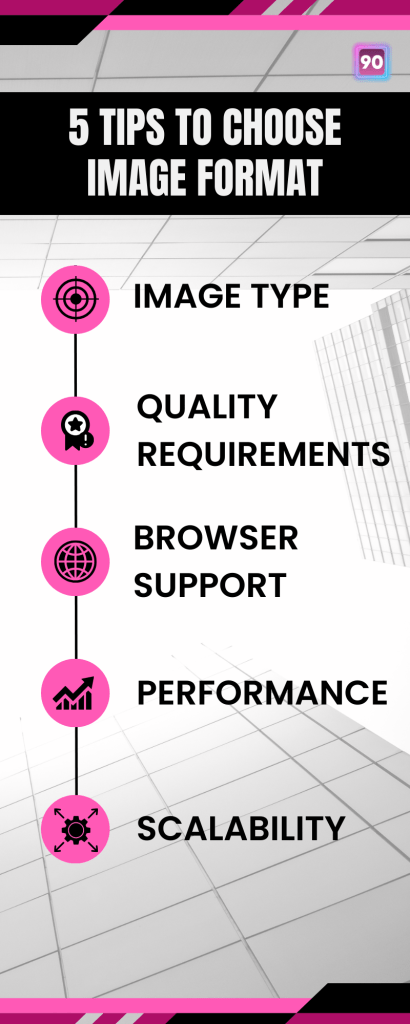
In reality, there is no ‘best image format’. It totally depends on your requirements. Here are some tips for picking the correct image format:
1. Image Type
The type of image might be the primary factor to be considered before choosing an image format. As said before, JPEG might be the best to share photographic images as it preserves capturing details. PNG might work well for displaying images with sharp edges and details. If you want to have a balance between image quality and file size, WebP could be the right choice.
2. Quality Requirements
Sometimes image quality may not be compromisable like in the case of game textures. In such cases, JPEG could be the worst pick as it follows a lossy compression technique that leads to noticeable quality degradation. Consider choosing PNG or WebP, as both of them ensure optimum image quality.
3. Browser support
If you want a wider reach for the image, go for traditional image formats like PNG or JPEG. WebP is relatively a new image format that is yet to be supported by certain browsers. So, some may not be able to view WebP files.
4. Performance
In the case of websites, loading speed is obviously a crucial metric. So, you must keep the file size to the minimum. And that’s exactly why the WebP file format was founded by Google. It delivers images with optimum quality at the lowest size. As a result, your website will load faster and search engines will prefer your website for ranking.
5. Scalability
If you want to resize your images frequently, WebP may not be a good choice. That’s because most editing tools and software do not support editing WebP files directly. So, it might be quite difficult to resize WebP images on a regular basis.
Final Words

In conclusion, there is no one-size-fits-all solution. The choice of the image format depends upon your usage and requirements. And it cannot be chosen overnight. You may need to test different image formats to find which one works for you well.
That’s where you require a reliable image converter tool. Convert as many images as you want to any format without any restrictions.

